Idea by
Z. Tesoriere
In_Fra lab (Zeila TESORIERE , Bianca ANDALORO, C. ITALIANO, G. LUPO, S. ALES, F. C. ASTA, G. GERACI, R. GIALLOMBARDO, G. LA GUARDIA, L. LA MARTINA)
Call for ideas 2020
The Infrastructural Leap
The Infrastructural Leap
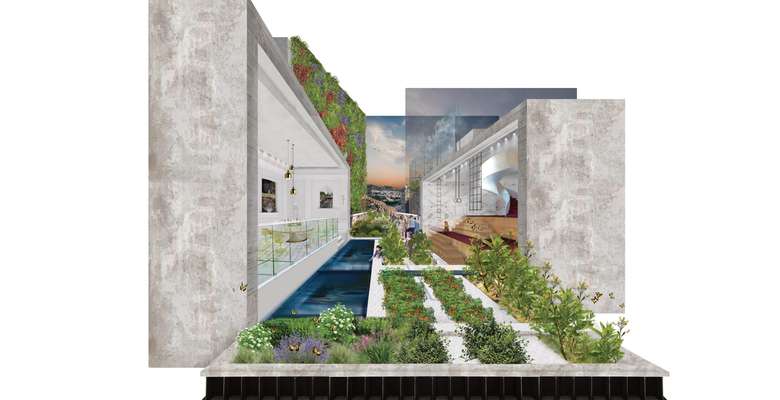
- New alliances
Architecture and the city will be no longer seen as a place, but as a condition: an advanced infrastructural condition. Our project aims to show that many cities that have failed their infrastructuralization during the XX century must abandon the old paradigms to realize the new infrastructural systems of the XXI century: they have to take an infrastructural leap. Renewable energies, new urban mobility, a multispecies living space where adaptive architecture merges with an augmented nature, will succeed in upend outdated trends, enhancing those cities' social, politic and economic abilities. The project is mainly shown by four collages set along the Ring-road of Palermo (Italy). Framed in a post-catastrophe scenario, this reverie of an architectural testing ground for new models of inhabitation targets real places, in order to remember that the transformations we await are as necessary as possible. “The infrastructural leap” is a fictional portrait of a forthcoming, real Palermo.

“Infrastructure as Everyday facility”. The first collage portraits Palermo on July, 14th, 2224, during the 600th traditional feast of the Patron Saint. The chariot, after having being carried through the city center for centuries, was parading along the ring-road. Once stopped under a junction, the crowd threw flowers at the Saint statue. People strolled, sat, met in a reconquered urban place that the infrastructural leap had endowed with a new shared identity: a proximity infrastructure.

“Surviving Unit”. The week after the Festino a hurricane hit Palermo. The infrastructural leap, that made the city resilient, proved it was worth: the ground of the ring-road was a draining interface, managing the flooding; the buildings were now diffused electrical powerplants. The Ring-road city, as a surviving unit, employed its energy self-sufficiency to sustain the whole city. A Resilient, evolutive architecture able to adapt and reach a new configuration, creating a new balance.
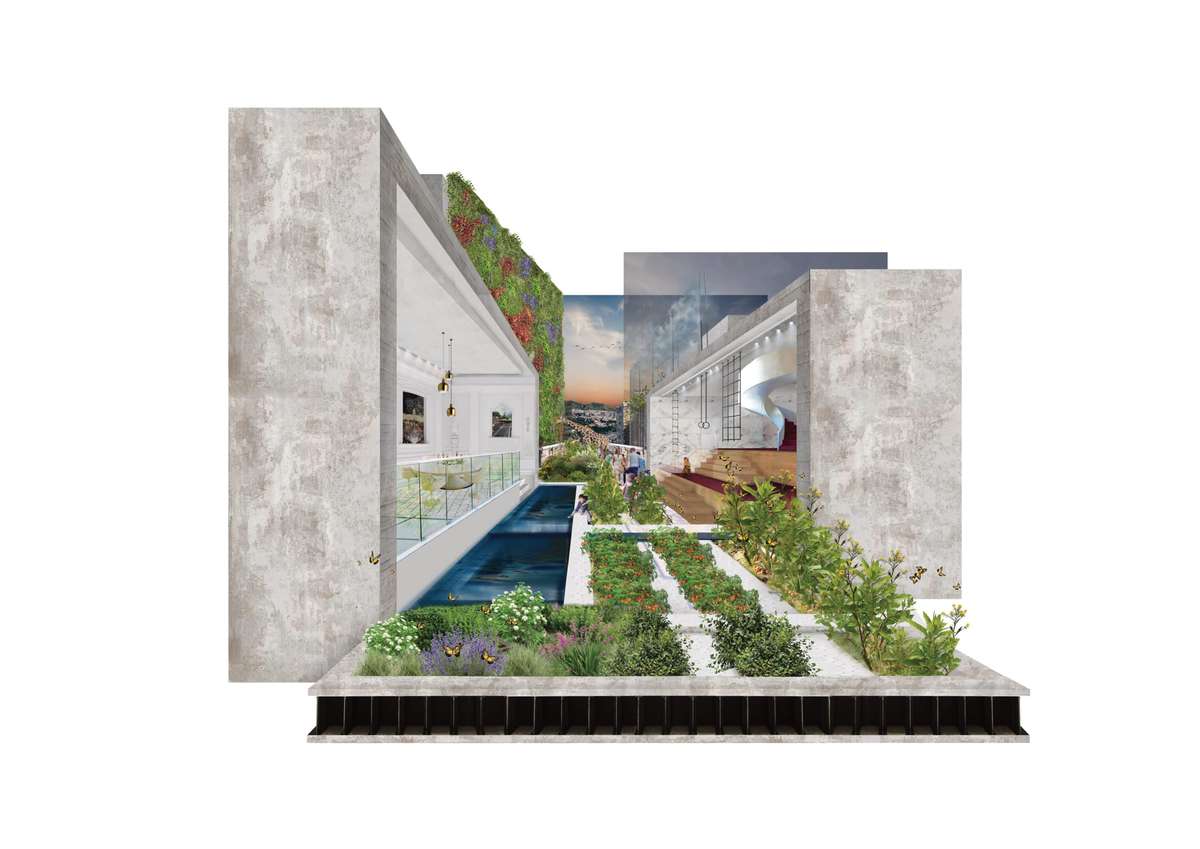
“Augmented nature”. After the hurricane, the recovering city turned itself into its pulsing living core. Urban gardens and farms, condominium citrus groves: an augmented nature designed by the Infrastructural leap. A new living architecture, where to recompose the outdated antagonism between city and nature, returned to an intertwined productive dimension that was lost in time. The city was now the ultimate author of nature: An infrastructura naturans, the best nature in town.
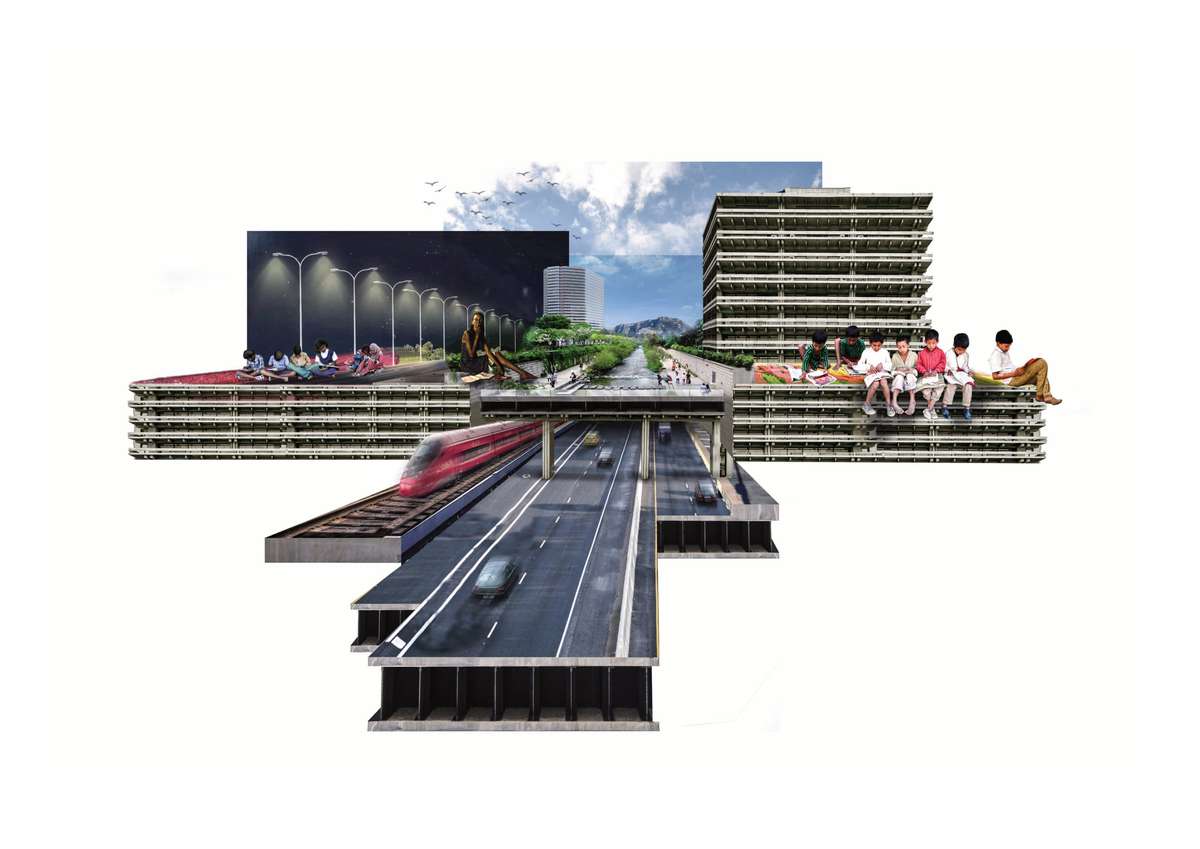
“Restorative infrastructure”. During the hurricane, the ringroad produced infodata: it had presented the catastrophe, thus activating devices to absorb the shock waves, increasing the elasticity of the buildings and the permeability of the soil. The Infrastructural leap converted the ring-road in a datafied urban device, able to regulate adaptive emergency plans. Producer of energy, intelligence and ecologies, the ring-road, mirrored in the wide range of its restoring actions, rescued the city.
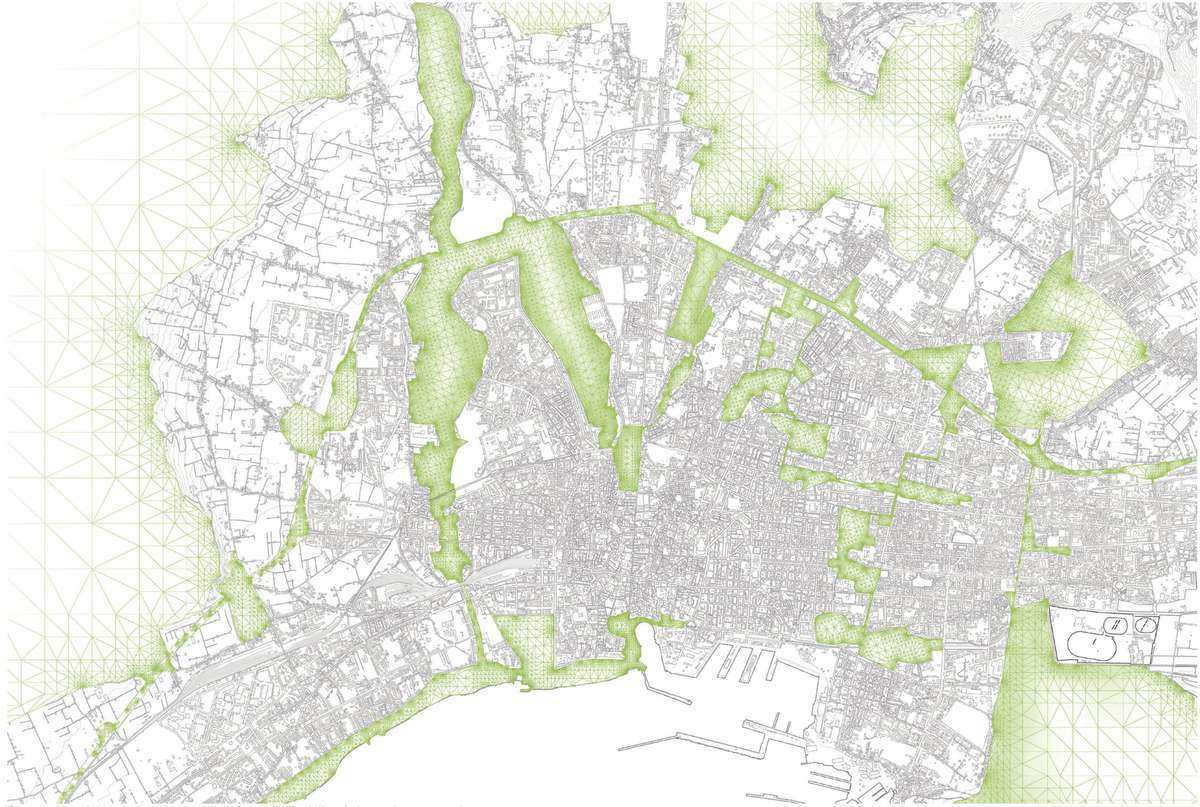
“Mapping the augmented nature”. Facing the real Palermo, the urban realm surrounding the Ring-road appears as a concatenation of existing urban, architectural and natural materials whose potential conditions are evident, and whose transformation could easily be addressed through the “Infrastructural leap” introduced by the four previous collages. Embracing a new resilient and sustainable vision can deeply inspire design innovation, engaging such spaces in order to inverse their values.
The Infrastructural Leap
The Infrastructural Leap

- New alliances
Architecture and the city will be no longer seen as a place, but as a condition: an advanced infrastructural condition. Our project aims to show that many cities that have failed their infrastructuralization during the XX century must abandon the old paradigms to realize the new infrastructural systems of the XXI century: they have to take an infrastructural leap. Renewable energies, new urban mobility, a multispecies living space where adaptive architecture merges with an augmented nature, will succeed in upend outdated trends, enhancing those cities' social, politic and economic abilities. The project is mainly shown by four collages set along the Ring-road of Palermo (Italy). Framed in a post-catastrophe scenario, this reverie of an architectural testing ground for new models of inhabitation targets real places, in order to remember that the transformations we await are as necessary as possible. “The infrastructural leap” is a fictional portrait of a forthcoming, real Palermo.
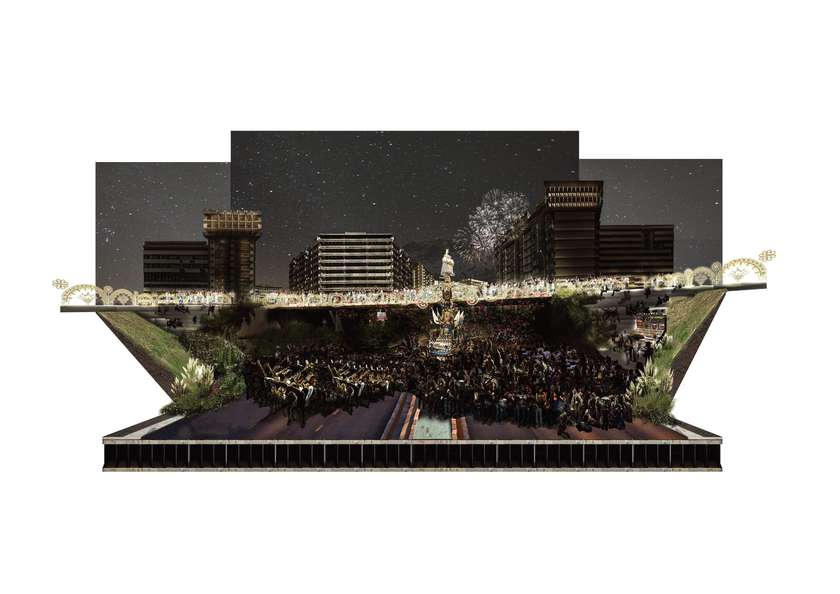
“Infrastructure as Everyday facility”. The first collage portraits Palermo on July, 14th, 2224, during the 600th traditional feast of the Patron Saint. The chariot, after having being carried through the city center for centuries, was parading along the ring-road. Once stopped under a junction, the crowd threw flowers at the Saint statue. People strolled, sat, met in a reconquered urban place that the infrastructural leap had endowed with a new shared identity: a proximity infrastructure.
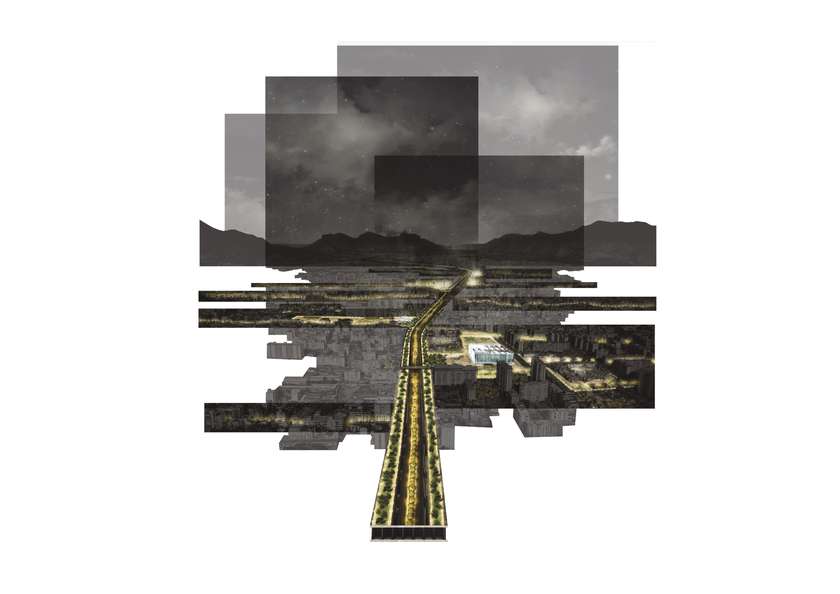
“Surviving Unit”. The week after the Festino a hurricane hit Palermo. The infrastructural leap, that made the city resilient, proved it was worth: the ground of the ring-road was a draining interface, managing the flooding; the buildings were now diffused electrical powerplants. The Ring-road city, as a surviving unit, employed its energy self-sufficiency to sustain the whole city. A Resilient, evolutive architecture able to adapt and reach a new configuration, creating a new balance.

“Augmented nature”. After the hurricane, the recovering city turned itself into its pulsing living core. Urban gardens and farms, condominium citrus groves: an augmented nature designed by the Infrastructural leap. A new living architecture, where to recompose the outdated antagonism between city and nature, returned to an intertwined productive dimension that was lost in time. The city was now the ultimate author of nature: An infrastructura naturans, the best nature in town.
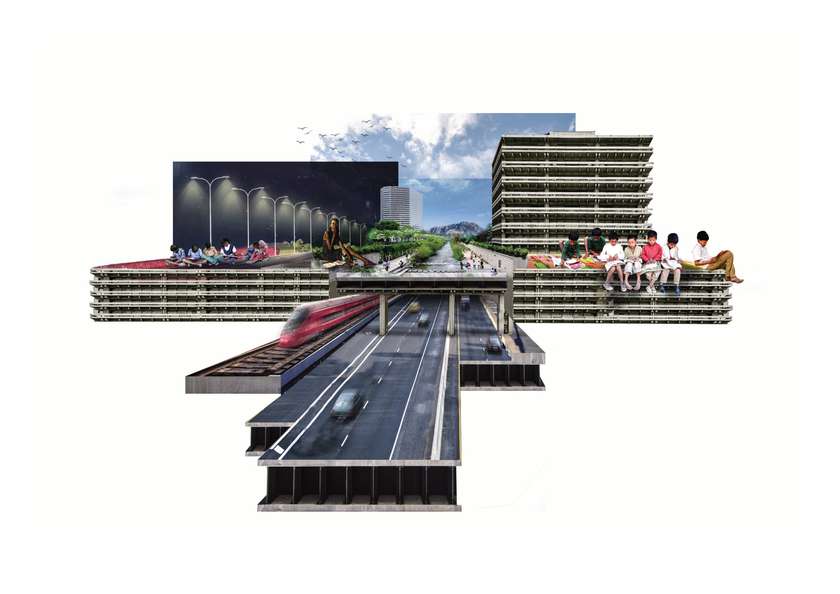
“Restorative infrastructure”. During the hurricane, the ringroad produced infodata: it had presented the catastrophe, thus activating devices to absorb the shock waves, increasing the elasticity of the buildings and the permeability of the soil. The Infrastructural leap converted the ring-road in a datafied urban device, able to regulate adaptive emergency plans. Producer of energy, intelligence and ecologies, the ring-road, mirrored in the wide range of its restoring actions, rescued the city.

“Mapping the augmented nature”. Facing the real Palermo, the urban realm surrounding the Ring-road appears as a concatenation of existing urban, architectural and natural materials whose potential conditions are evident, and whose transformation could easily be addressed through the “Infrastructural leap” introduced by the four previous collages. Embracing a new resilient and sustainable vision can deeply inspire design innovation, engaging such spaces in order to inverse their values.